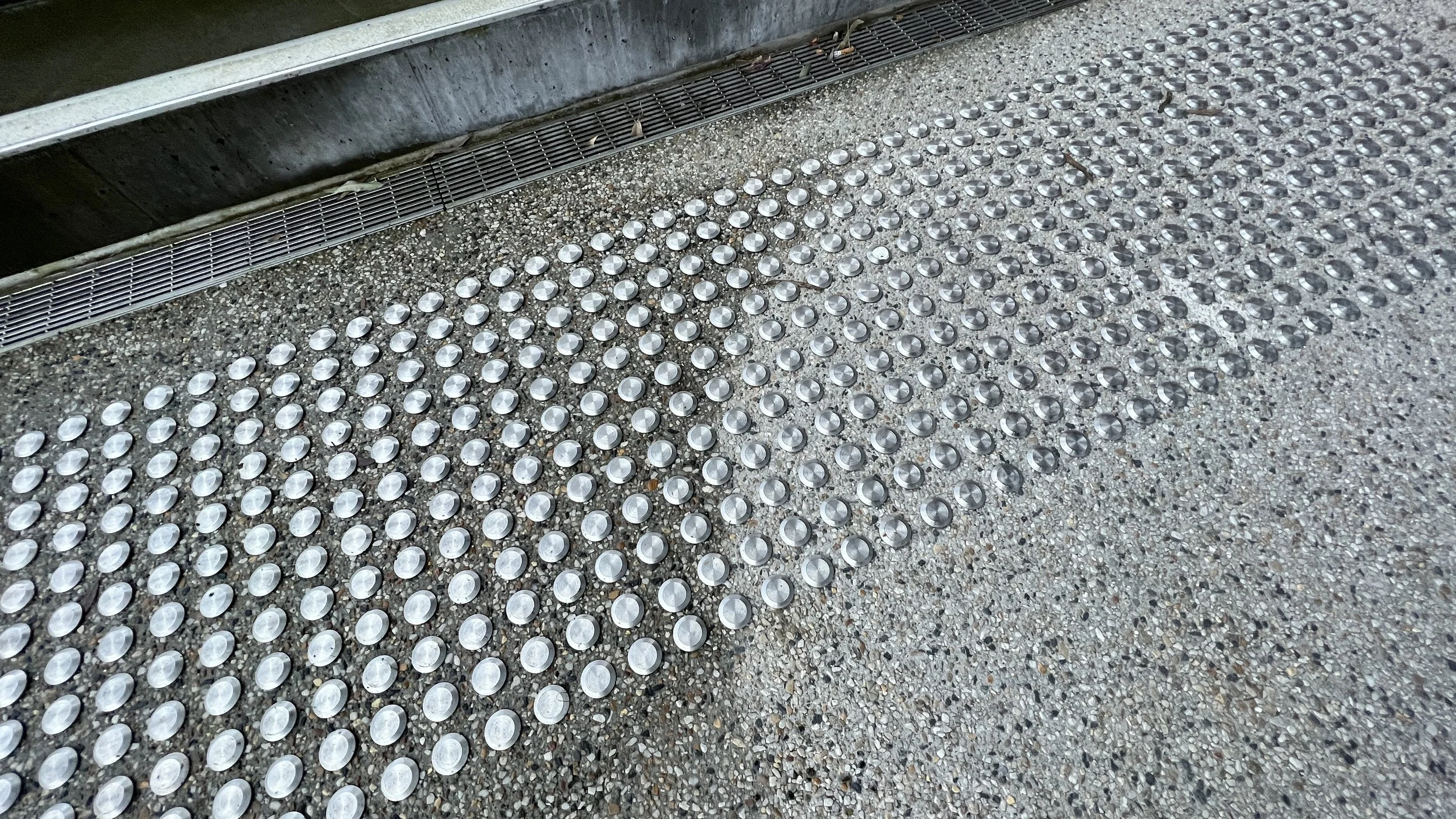Changing luminance contrast in the wet & dry
I can see you when you’re wet but not when you’re dry. Please explain.
Watch or Listen: 2.41 min | Images: 4 | Author: Dean Homicki | Return to Journal Menu
Changing luminance contrast in the wet and dry
Listen
Click/Tap the audio player below to listen to the transcript of this journal post as an audible version. This is a streamed broadcast from the Staebl.academy website.
Images
19 persons out of 20 defined as blind or vision impaired have some residual sight. This kind of disability is one of experiencing low vision. Mobility aids like Tactile Ground Surface Indicators (TGSIs) are designed to give orientation and direction to persons with low vision who rely on a luminance contrast between the TGSI truncated domes and bars to the adjacent surrounding surface.
This video details a stairway design with the application of TGSIs. The new government facility has TGSIs that provide orientation in wet weather but not in the dry. These TGSI products only work some of the time.
Location: Ballarat Central, Victoria
__
Dean Homicki from Stæbl Academy.
Mobility Access Compliance in Minutes. Click the ‘Try it Now’ button below. Do it.
Be the first to know. Join with the Stæbl Academy and never miss a Journal Post.







